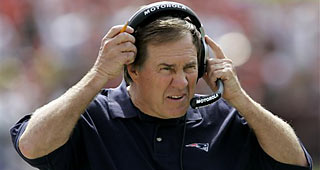The effectiveness of tight ends has changed how defenses choose their personnel.
For example, the New England Patriots used the 48th overall pick of the 2012 Draft on Tavon Wilson. Wilson played defensive back at Illinois, but was viewed as not fast enough to play safety and not big enough to play lineback.
The Seattle Seahawks drafted a similar player in Winston Guy in the sixth round.
“The length that tight ends have and if they have some blocking abilities, they provide you with a tough matchup,” said 49ers defensive coordinator Vic Fangio. “Any time a tight end is a good receiver, some people think you have to put a defensive back on him because they’re good receivers. Sometimes that plays into their hands because they have such a size advantage. You’re basically trying to cover a power forward with a point guard.
“Sometimes a better matchup is a bigger linebacker type that can at least line up with him size-wise and not get horsed around too bad. All of that is contingent upon what you have available on your team from a cover standpoint in dealing with those tight ends.”
Tweeners were once referred to in a negative way for players that were stuck between defensive end and outside linebacker.
But now tweeners are players who can play both defensive back and linebacker.
“That guy is important now,” said Buccaneers veteran defensive back Ronde Barber. “Whether he’s a safety first or a corner first, you definitely need somebody who is skilled enough to be able to match up with a wideout or a tight end. I know we’ve had issues with it over the years. Even the past two years, we’d bring in another corner and let the corner cover the tight end because of the matchup athletically. So it’s a continuing issue and as these more and more athletic-type tight ends come in, it’s tough to deal with.
“It’s hard to see how this deal doesn’t continue where every team is going to have a guy like that. I know that’s what they look for. You look for those types of guys now in the draft.”
Bill Belichick has always been interested in players that could serve multiple functions and keeps in close contact with college coaches where many NFL trends actually begin.
“You’re seeing the safeties get smaller because they have to go cover a slot receiver,” said Senior Bowl executive director and former Browns general manager Phil Savage. “Are there linebackers in college football that are probably undersized at 225 or 235 pounds to play in regular defense but could cover a tight end and play that position as a nickel or dime linebacker? Absolutely.
“The game in college has become so space-oriented that these kids now are more apt to be cover players than be point-of-attack defenders. Most of the defensive players now are run-around, speed-oriented players. They’ve gotten smaller: smaller edge rushers, smaller linebacker because they have to cover a lot of ground out in space. You have smaller safeties because they’re having to line up with the third and fourth wideout in coverage. It’s really a fascinating study.”
Fangio said those hybrids certainly have value now though getting them on the roster is sometimes difficult.
“That’s always the issue,” he said. “If he doesn’t fit in some of the stuff you’re going to be doing on a regular basis, then it becomes a luxury player and some teams have a hard time carrying those kind of guys.
“The good teams, the smart teams, understand that you need players on defense because defense has to defend a variety of offenses on a week-to-week basis. On offense, you determine what you play. There is a spot for a guy like that on a roster, but sometimes it’s hard to fit them in.”
The Bills drafted a bigger cornerback, Stephon Gilmore, 10th overall this year in part to battle the New England tight ends.
“First of all, you have to be big enough to match up against the [Patriots] tight ends — especially in our division,” Bills general manager Buddy Nix said. “What they will do, and the same thing we do, is spread you out with five receivers and then run the football. You have to have a guy who can tackle. And this guy is very physical as a corner.
“You guys see that what we’re facing most every Sunday when they spread out guys that have tight end numbers on them and run like receivers, they’re big. You just have to have corners that can match up with them.”


